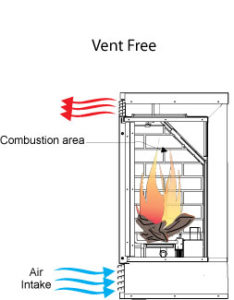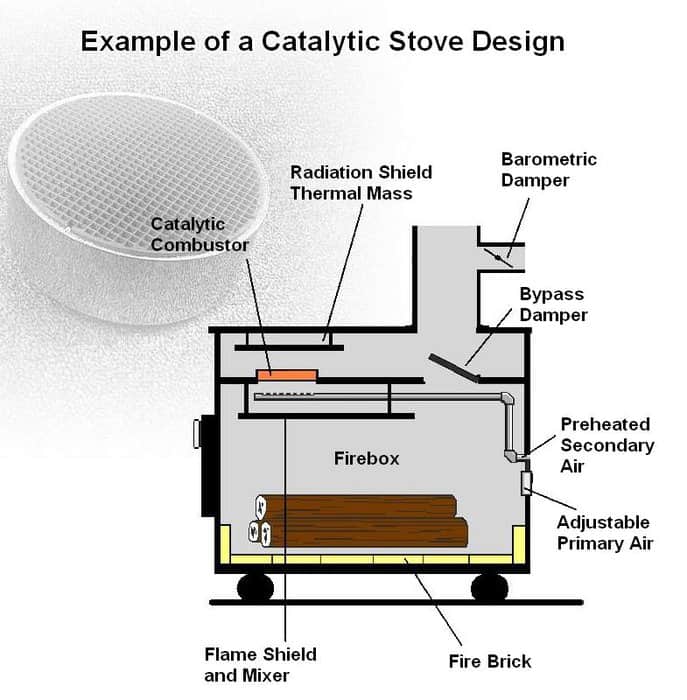Choose Gas Fireplace
How to choose the right gas fireplace for your home?
Many home owners wonder how to shop for a gas fireplace, as we have encountered many customers who have visited our fireplace store and were not sure how to start looking for the right gas fireplace. How to choose gas fireplace, first you need to begin with understanding some basic knowledge about the type of gas fireplaces, performances, efficiency, design ideas, the place where the fireplace will be installed before you even consider doing a remodeling in your home.
Questions and Answers About Gas Fireplaces
The best way to start shopping for a gas fireplace is to gather as much information as possible such as:
What is the main source of your home heating?
Approximate square footage of the room where the gas fireplace will be installed
About the place where it will be installed (size of wall in height and width, any bulkhead on the way)
The size of opening (height, width, depth, and the rear width, in case shopping for inserts)
Where the gas meter is placed in your house
How far approximately your furnace room will be from the installation site
If there are any windows close to where the fireplace will be installed
Of course some photos of your fireplace design ideas or your existing fireplace is ideal to have on you when you visit a fireplace store.
Are gas fireplaces safe to use?
All gas fireplaces from brands that are sold in Canada are certified to safety standards and regulations set out by the American National Standards Institute and the Canadian Standards Association. Every fireplace is put through a sequence of safety checks and quality assurance tests to ensure your the fireplace is safe and reliable.
The safety standing pilot feature on gas fireplaces ensures no gas flows to the unit when it is not being used. This is a newer technology called electronic ignition pilot vs standing pilot where the pilot light is on all the times even when the fireplace is not burning.
Many gas fireplaces, inserts and stoves are equipped with safety features such as a 100% fail-safe shut-off valve. If the pilot flame goes out, the gas flow will automatically turn off. In addition, all models must meet strict safety certification requirements.
Gas fireplace insert vs direct vent gas fireplace
The two main options are gas fireplace inserts and direct vent gas fireplaces.
What is a gas insert fireplace?
A gas insert fireplace fits into an existing brick or stone fireplace, or even a factory-built fireplace, which you want to convert it to gas, which is the most cost effective solution. A gas insert uses the existing chimney for venting pipes and of course you are mostly limited to the firebox opening size. Therefore it is always recommended to have your measurements on you when you are visiting our fireplace showroom.
What is a direct vent fireplace?
A direct vent gas fireplace is for those houses that never had a built-in structure and is widely used for remodelling projects. As the name explains, direct vent gas fireplace is vented directly to the outdoor wall versus gas inserts using a chimney flue to vent outside. The beauty of DV fireplace is you can install it on any wall with proximity to an outdoor wall for venting, plus you are most often not limited to size.
From traditional fireplaces to contemporary fireplace designs are very much pleasing to the eye, rather like fine appliances for home heating.
Depending on what heating performance your home requires the options on each fireplace and the fireplace brand, your decision has to do with aesthetics and the gas fireplace cost. 
Can I Install a TV Above Gas Fireplace?
Gas fireplace clearance requirements to combustibles around and above fireplaces is not the same as clearances to TV’s and other electronic appliances. Televisions and electronics in general are manufactured and assembled using many variations of materials and are subject to damage from far lower temperatures. You should determine the required clearances from the manufacturer or distributor of the TV or electronic device.
What you need to know about venting a gas fireplace
Gas inserts use the existing wood-burning chimney to vent the pipes, using flexible chimney pipes for air intakes and combustion. The two flexible pipes are placed within each other and are sealed between the gas insert and chimney flue. Depending on the gas insert it may take different size of flexible pipes.
The beauty of Direct Vent technology is that you do not necessarily need to go up through your roof to terminate the venting. All you need is proximity to an outside wall depending on the fireplace model you choose while keeping the installation costs down. From the outside of your house, all you would see is an sleek and attractive patented AstroCap horizontal termination cap which you can paint to match & blend in with the outside of your home using the right type of coating material.
What is a B-Vent or Natural draft gas fireplace?
A B-Vent fireplace draws air necessary for combustion air from inside air of your home. The combustion by-products or flue gases are hot and naturally rise up through the vent which provides a route for these hot gases to escape from the house.
What is a Vent Free gas fireplace?
A ventless or vent-free gas fireplace uses room air from the home for combustion and it also releases the combusted exhaust (carbon monoxide and carbon dioxide) back into the home. Most vent free gas fireplaces are prohibited in Canada. Ventless fireplaces will likely cause poor indoor air quality and moisture issues in your home. Other examples of vent free fireplaces are ethanol fireplaces which were widely used, however they also cause poor indoor air quality.
TIPS
Last but not the least, how to choose gas fireplace also depends on the fireplace contractor you are dealing with as well. When you are shopping around for a gas fireplace, the majority of information which you gather on how to choose a fireplace is through the brochure and mostly from the dealer. Beware of dealers who don’t have a fireplace showroom – their advice is not worth much and may be worse than nothing. Hint: the staff of big box stores don’t usually know much about their heating products, so be skeptical of any advice you receive from them. The best is to visit our showroom and see the fireplaces while getting time worthy advice from real professionals at Impressive Climate Control.













Nothing Found
Sorry, no posts matched your criteria